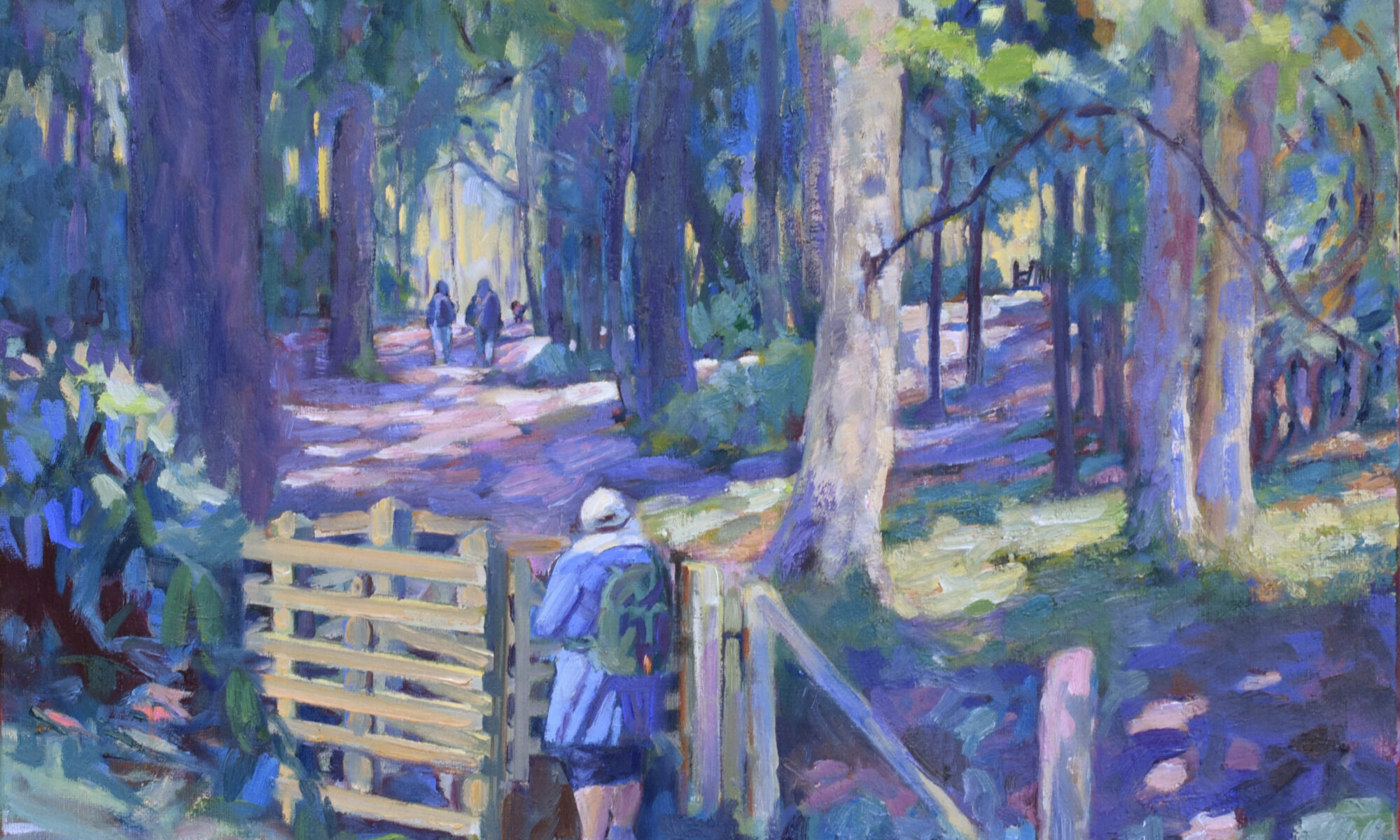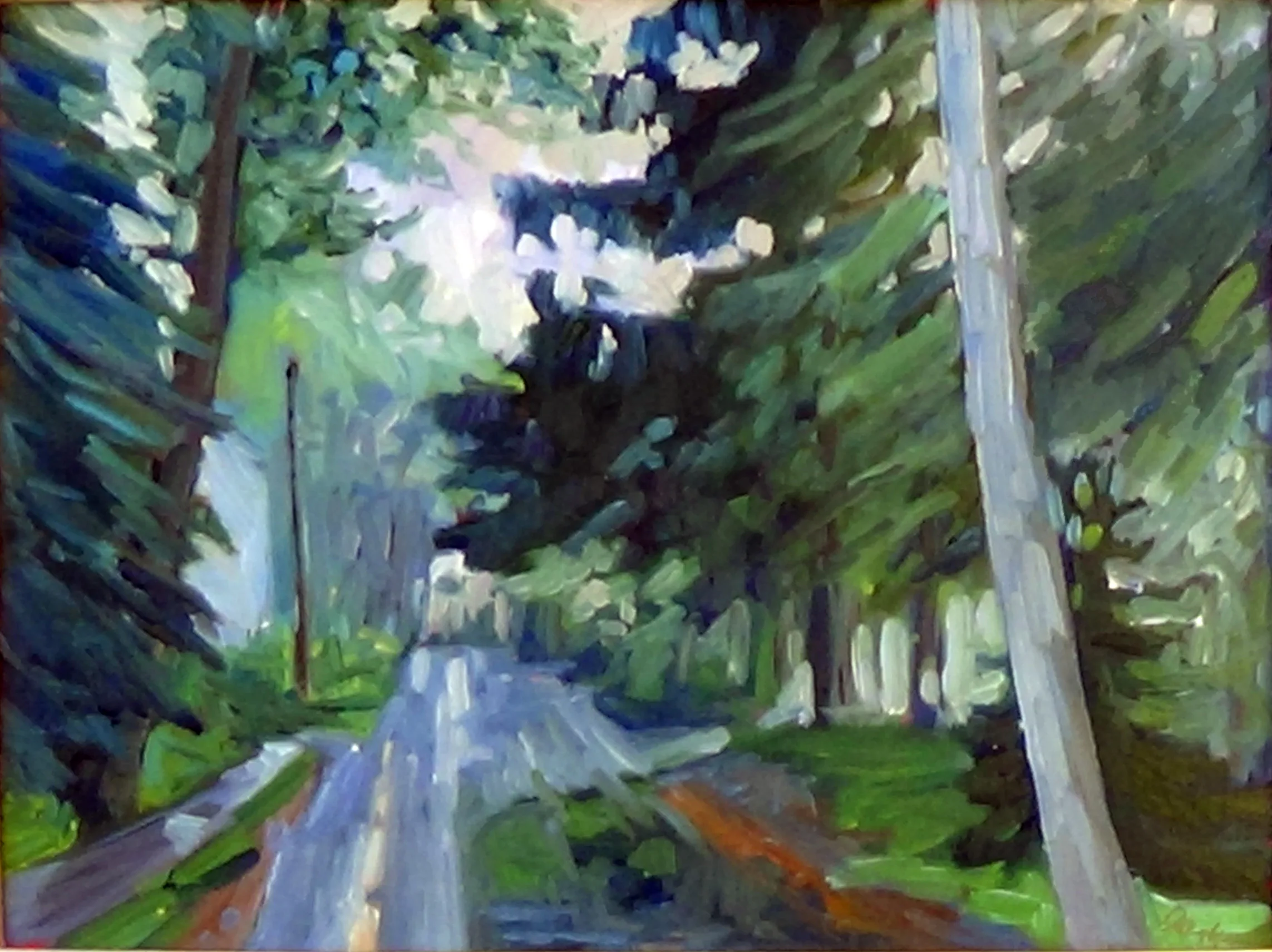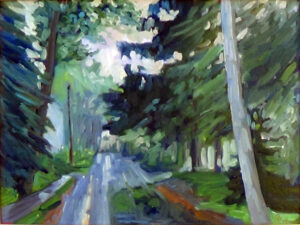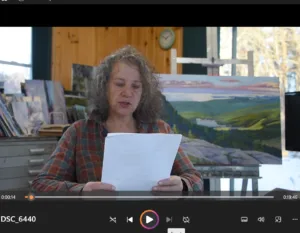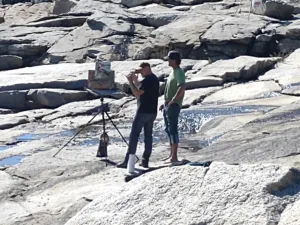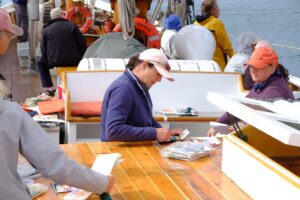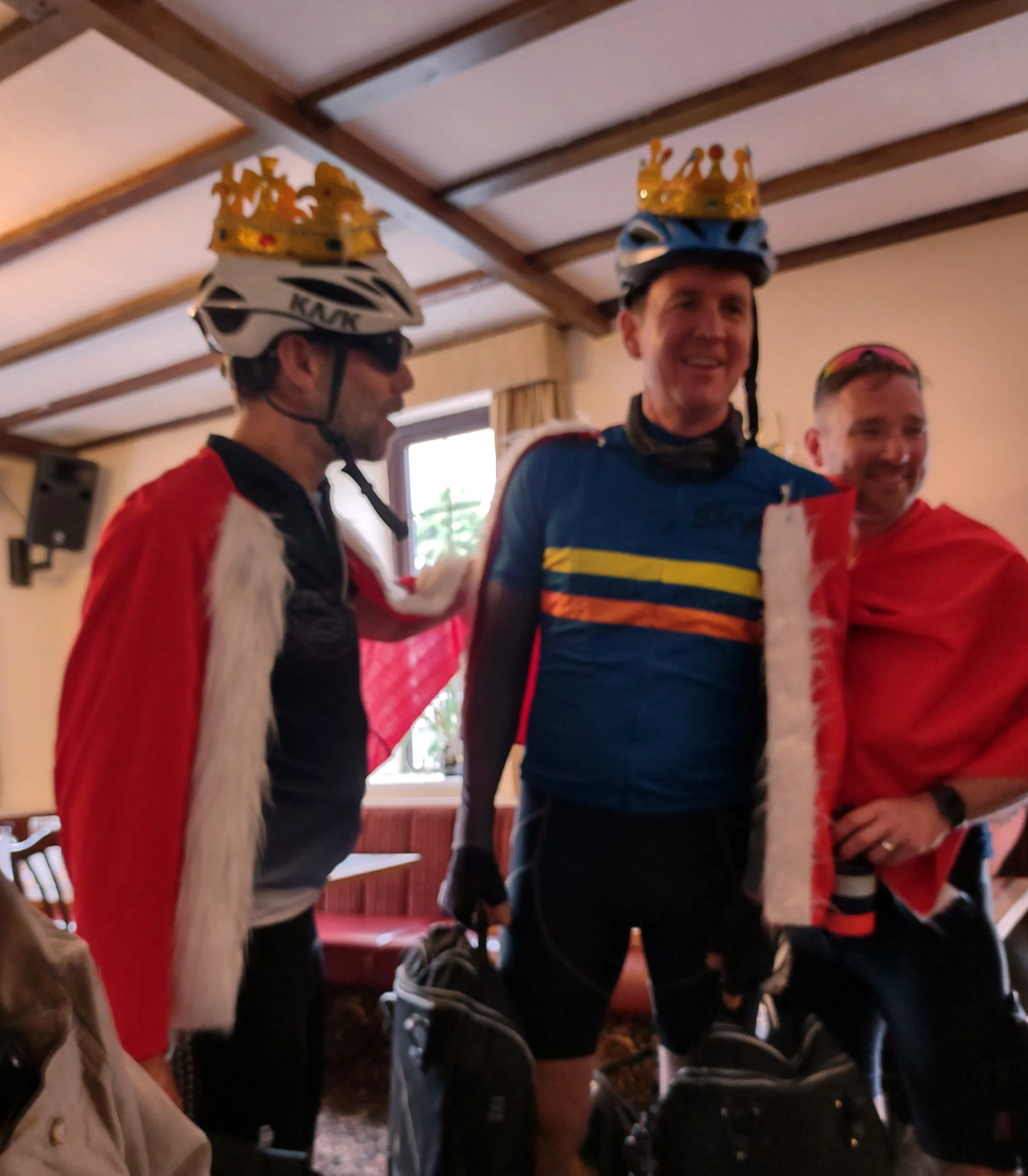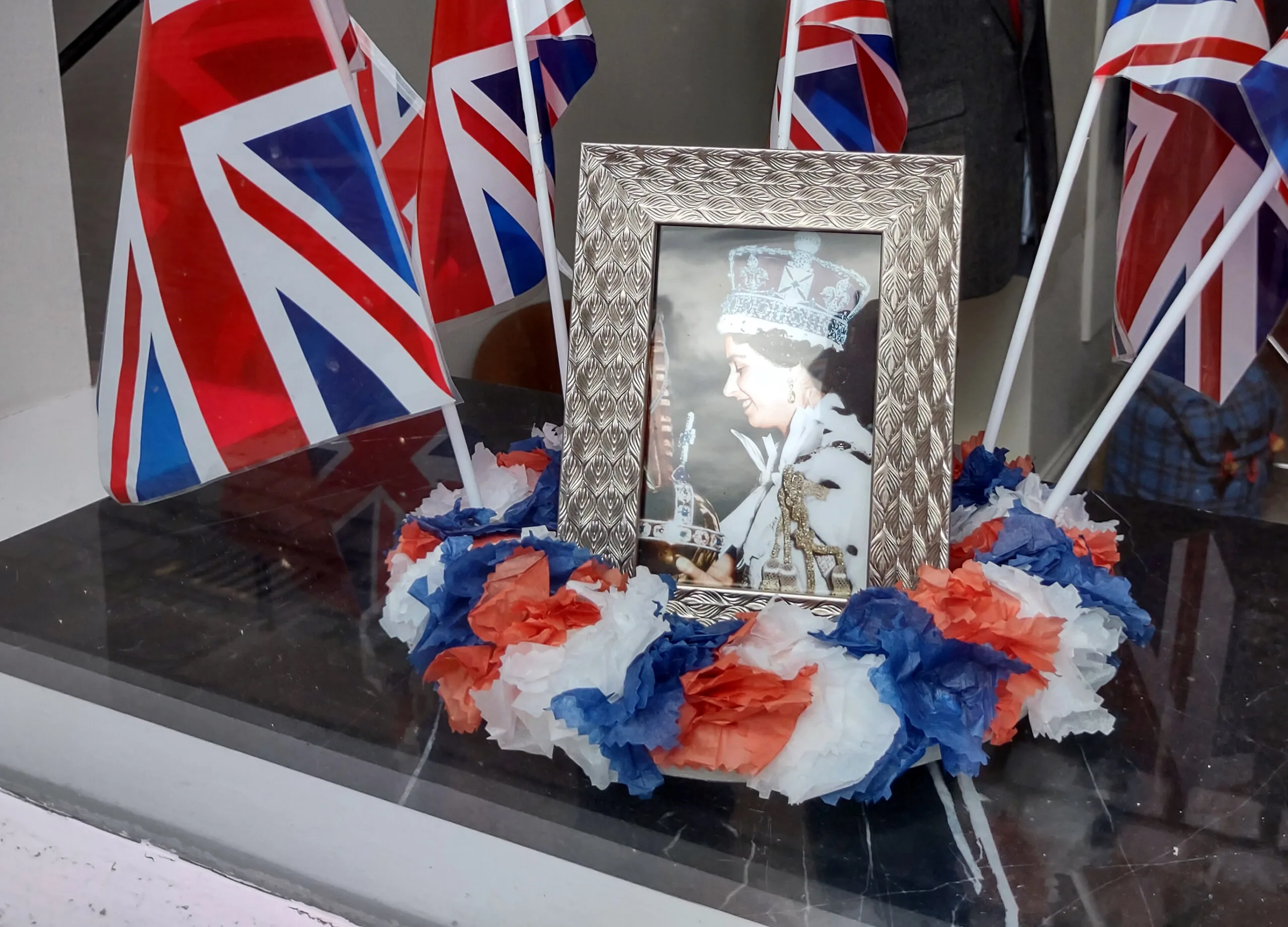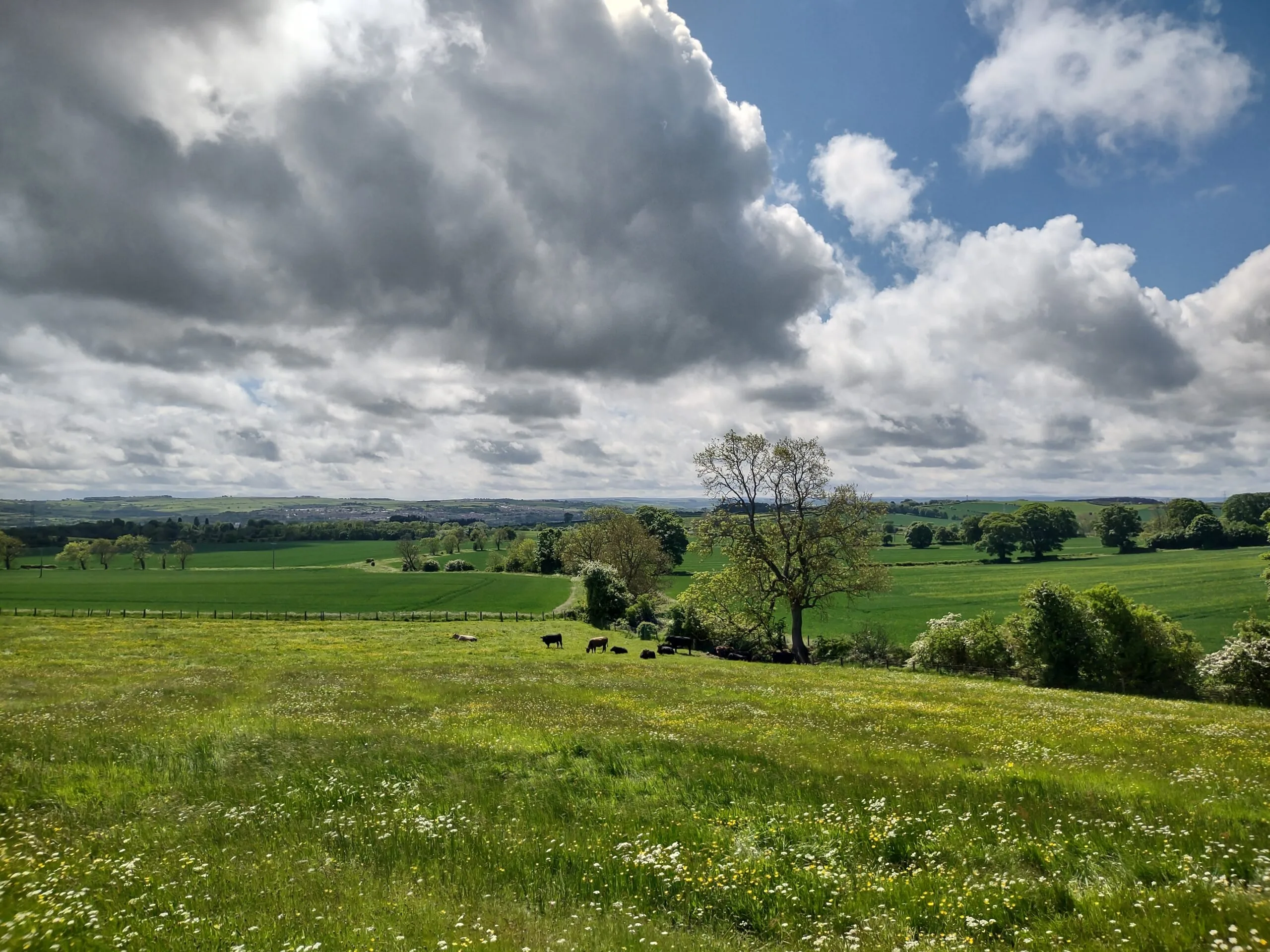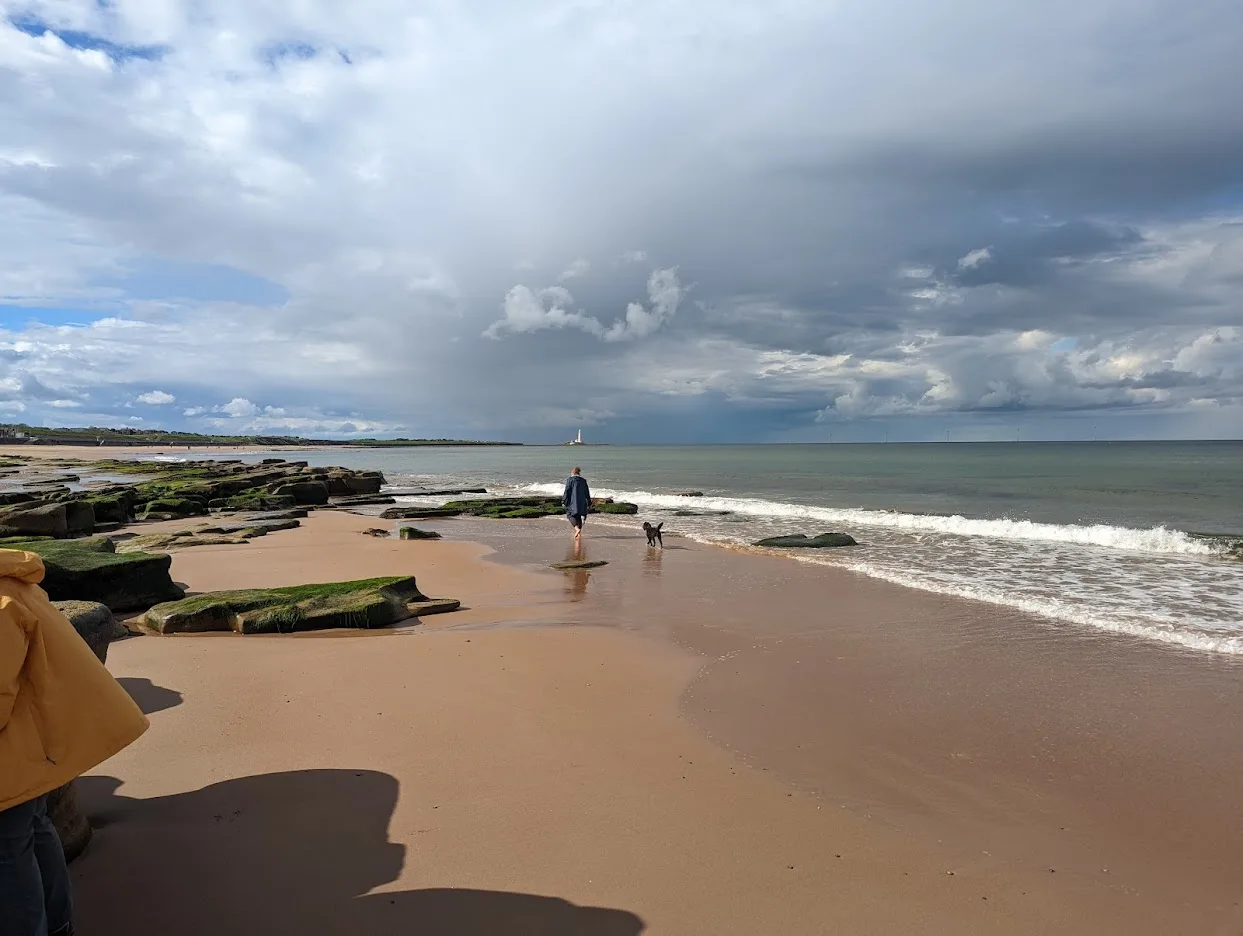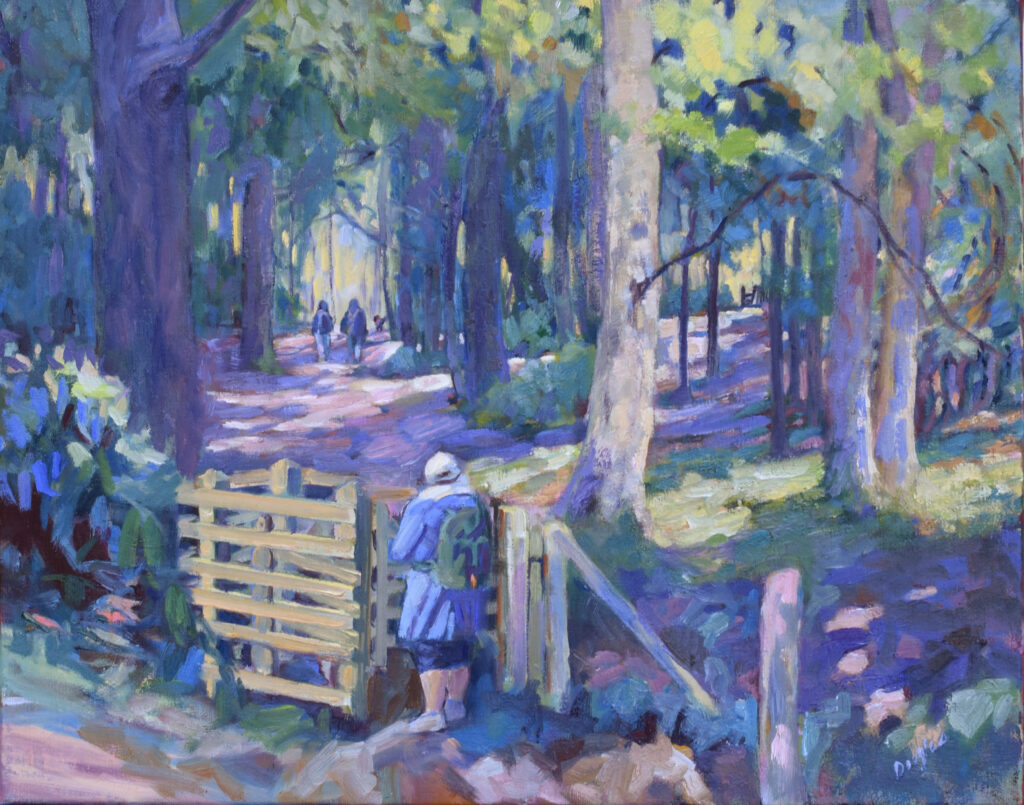
I’ve never starred in one of my own paintings before, and if I were to choose my pose, I probably wouldn’t choose to paint my backside, but there was something magical about this moment. My husband posted a photo of this scene on Facebook, from our hike along Hadrian’s Wall in 2022.
“I should paint that,” I mused.
“Do it,” my friend Kenny said, and a commission was born.
There are some painters who’ve specialized in painting the deep woods: the Barbizon painters and John Carlson come immediately to mind. The trouble is in sorting the screen of trees into a coherent pattern. One can vignette the subject into the deep woods, as Colin Page did in this lovely painting of his daughters. One can use the trees as a vertical screen, as Gustav Klimt did in his birch forest paintings. Or one can group them in masses, as Carlson did here.
Stiles have gone the way of the dodo in the US, but in Britain they’re very common. They’re steps or gates that allow people to pass a fence or wall while keeping the sheep or cows neatly in their enclosures. Some are nothing more than flat stone footholds; nicer ones have a swing gate within a frame box, as here. I think we crossed about 20,000 of these on our 84-mile hike.
Wooden stiles have all the visual charm of a hayrack. They’re of unfinished dimensional lumber and squared off to the path. While the stile is the subject of this painting, it couldn’t be the main focus. Nor should I be; even if I am the largest figure in the painting. Instead, it’s the couple in the distance with their little dog, Poppy.
A walk in the woods
It was a moment I remembered well, because I was sure that Kenny and Martha had chosen the wrong path. I was certain that we should veer to the right. Part of my goal in the painting was to portray that sense of Robert Frost’s The Road Not Taken:
Two roads diverged in a wood, and I—
I took the one less traveled by,
And that has made all the difference.
Sometimes it isn’t by choice.
The challenge in this painting was finding the right color temperature and brushwork without overriding the peace and solitude of these ancient woods. I’m quite happy with the results, and I don’t often say that.
I’m in Britain on another lovely, long, blister-inducing hike. I’ve turned my phone off and while I’m gone, Laura will be running the office. Just email me as usual if you have questions or problems registering for a class or workshop. (Who am I kidding? She fixes all that stuff anyway.)
Reserve your spot now for a workshop in 2025:
- Advanced Plein Air Painting, Rockport, ME, July 7-11, 2025.
- Sea and Sky at Acadia National Park, August 3-8, 2025.
- Find Your Authentic Voice in Plein Air, Berkshires, MA, August 11-15, 2025.
- Immersive In-Person Fall Workshop, Rockport, ME, October 6-10, 2025.

